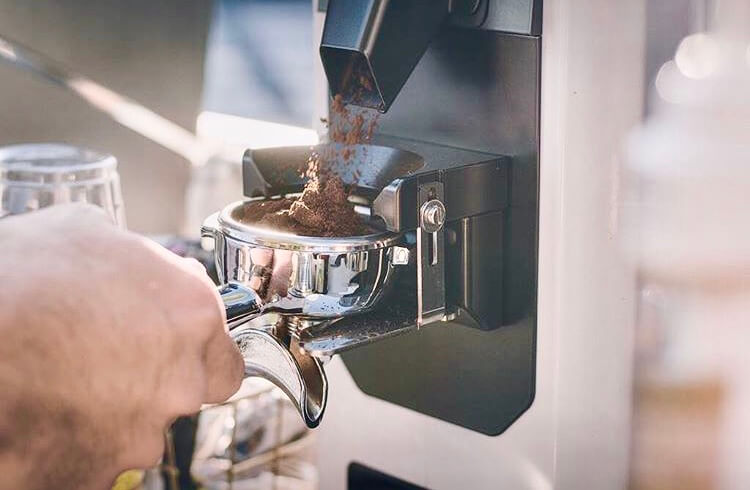What Makes SOE Single Origin Espresso Different from Mixed Roasts
Wiki Article
Coffee Beans Uncovered: Discovering the Keys of Espresso and Blended Coffee Beans
When you think of coffee, what comes to mind? Is it the rich fragrance of espresso or the complexity of a well-crafted mix? Understanding the subtleties of coffee beans can change your experience. Each selection, from Arabica to Robusta, holds its very own keys. As you discover even more, you'll discover exactly how these beans shape flavors and influence sustainability. What might you uncover concerning your following mug?The Beginnings of Coffee: A Historic Viewpoint
Although espresso is now a staple in coffee culture worldwide, its origins map back to the very early 20th century in Italy. You could be surprised to find out that the creation of coffee was driven by a wish for speed and performance. In 1901, Luigi Bezzera patented the very first coffee equipment, aiming to make coffee faster than standard techniques. This development quickly caught the interest of Italian coffee drinkers, causing the espresso bars we know with today.Understanding Coffee Beans: Varieties and Characteristics
When you think concerning espresso, it's crucial to acknowledge the various bean ranges and their unique tastes. Each type brings a distinctive character to your mug, influenced by factors like roast degrees. Comprehending these components can raise your coffee experience considerably.Espresso Bean Varieties
As you check out the world of coffee, you'll promptly find that not all beans are created equivalent; each selection brings its own special tastes and features to your mug. Arabica beans are understood for their smooth, nuanced flavors and lower caffeine material, making them a favorite amongst coffee lovers. Each selection uses something various, so exploring will help you find your ideal coffee.Flavor Accounts Explained
Understanding the flavor accounts of various coffee beans can raise your coffee experience. Each bean range supplies unique qualities that affect mouthfeel, scent, and taste. Arabica beans usually offer a sweeter, a lot more complex taste with tips of fruit and flower notes, while Robusta beans have a tendency to be bolder, with nutty and earthy touches.When you explore single-origin beans, you might uncover unique local flavors-- Main American beans may be bright and citrusy, whereas Italian blends commonly supply abundant, chocolatey notes.
Roast Levels Impact
Roast levels play a vital role fit the taste and fragrance of espresso beans, affecting your total coffee experience. With light roasts, you'll find intense acidity and much more obvious fruity notes. As you relocate to medium roasts, you'll appreciate a balanced profile that showcases sweet taste and complexity. Dark roasts, on the various other hand, usually present abundant, strong tastes with a smoky finish, yet they can mask the beans' intrinsic qualities. Understanding these roast degrees aids you select the coffee that suits your preference preferences. Try out different roasts can bring about wonderful explorations, improving your appreciation for coffee. Don't think twice to explore various roast levels and discover your excellent cup!The Art of Mixing: What Makes Blended Coffee One-of-a-kind
What makes blended coffee so remarkable? It's all about the art of integrating beans from different origins, roast levels, and flavor profiles. When you blend, you're not just mixing; you're creating an unified equilibrium that highlights the toughness of each bean. You can explore various combinations to enhance sweet taste, body, and level of acidity, leading to a brew that's richer and much more complex than a single-origin coffee.And also, blending can help keep consistency, supplying a reliable flavor experience no matter of seasonal variations in beans. Whether you're a home or a barista brewer, grasping the art of mixing opens up a world of creative thinking and flavor opportunities, making your coffee experience truly distinct.
Taste Profiles: Tasting Notes of Coffee vs. Blended Coffee
Blended coffee provides a globe of taste possibilities, however when it comes to espresso, you're looking at a much more focused experience. Espresso generally showcases vibrant, abundant flavors with a thicker mouthfeel. You might see notes of dark chocolate, caramel, or also hints of fruit, relying on the beans. The intensity can be both pleasing and revitalizing.On the various other hand, combined coffee provides a complex tapestry of flavors. You can check out a range of sampling notes, from pleasant and nutty to flower and fruity. Each mix can offer something distinct, frequently incorporating beans from different regions to create a well balanced account.
While coffee supplies a strike, mixed coffee welcomes you to relish the nuances. Whether you like the robust toughness of coffee or the complex tastes of mixed coffee, each mug tells its own story, awaiting you to discover.
Developing Techniques: Perfecting Your Espresso Shot
To attain the perfect espresso shot, recognizing the developing strategies is important, as even minor adjustments can significantly affect the taste and high quality. Begin by utilizing fresh, premium coffee beans; grind them prior to brewing for optimum taste. Go for a fine work, regarding the consistency of table salt, to guarantee optimal extraction.Next, pay focus to your water temperature level; it ought to be between 195 ° F to 205 ° F. Too warm or also chilly can ruin your shot. Usage concerning 18-20 grams of coffee for a dual shot, and tamp it evenly with firm stress to develop an uniform puck.
A longer extraction can lead to anger, while too brief can result in sour flavors. Exercise these techniques consistently, and you'll fine-tune your skills, attaining that rich, robust espresso shot you hunger for.
The Function of Roast Degrees in Coffee and Blended Coffee
After grasping the brewing strategies for espresso, it's time to consider exactly how roast degrees affect the taste account of your coffee. The roast level can significantly change your coffee's body, scent, and preference. Light roasts tend to highlight the coffee's beginning, offering intense acidity and fruity notes, while medium roasts equilibrium level of acidity and sweet taste, creating a well-rounded flavor. Dark roasts, on the other hand, draw out strong, abundant tastes with lower acidity, commonly generating chocolate or great smoky touches.
Discovering Sustainability: Honest Sourcing of Coffee Beans
When you choose coffee, you're not simply selecting a taste; you're choosing about the impact on farmers and the environment. Understanding Fair Profession methods, chemical-free farming approaches, and accreditation requirements can help you sustain sustainable coffee sourcing. Allow's check out how these factors contribute to a more honest coffee experience.Fair Trade Practices
Fair Profession methods play a necessary role in making certain that coffee beans are sourced fairly and sustainably. You sustain farmers that get fair earnings and job in safe problems when you pick Fair Profession coffee. This commitment to honest sourcing helps combat poverty and advertises community advancement in coffee-growing areas. You'll find that Fair Profession accreditation additionally encourages eco-friendly farming practices, as manufacturers are incentivized to protect their land and resources. By selecting Fair Profession brands, you're not simply taking pleasure in an abundant cup of coffee; you're making a positive effect on the lives of those that grow it. Your option issues, and it attaches you to a global activity concentrated on justness and sustainability in the coffee market.Organic Farming Methods
As you discover the world of moral coffee sourcing, natural farming methods arise as a vital part of sustainability. In addition, it commonly leads to more powerful, healthier coffee plants, resulting in richer tastes in your cup. When you decide for natural coffee, you're making a mindful choice that profits both the planet and your taste buds.Certification Standards Explained
Recognizing accreditation criteria is vital for anybody interested in fairly sourced coffee. These criteria, such as Fair Trade, Rain Forest Partnership, and USDA Organic, assurance that coffee is expanded under sustainable methods. You support farmers that stick to ethical labor techniques and ecological defense. when you choose accredited coffee.Fair Profession certification concentrates on giving fair earnings and functioning problems, while Rainforest Alliance highlights biodiversity and community preservation. USDA Organic ensures that no synthetic plant foods or chemicals are made use of. By acquainting yourself with these qualifications, you can make informed choices that line up with your worths. Following time you go to your local coffee shop or supermarket, look for these labels, and feel great recognizing your coffee acquisition favorably influences areas and the atmosphere.
SOE
Regularly Asked Inquiries


How Does Altitude Influence the Development of Coffee Beans?
Altitude influences coffee bean growth by affecting temperature level and environment. Greater altitudes often create denser beans with even more facility flavors, while lower elevations can cause faster growth but much less savory results. You'll taste the distinction!What's the Distinction Between Arabica and Robusta Beans?
Arabica beans are sweeter and much more complex, while Robusta beans have a more powerful, harsher flavor with greater caffeine web content. You'll find Arabica preferred for specialized coffees, whereas Robusta's typically used in instantaneous coffee and coffee blends.Can Coffee Beans Go Poor or Lose Flavor Over Time?
Yes, coffee beans can spoil and lose taste gradually. They'll become stagnant if you save them incorrectly or maintain them too long. Always maintain your beans in an airtight container away from light and dampness.What Are the Health Conveniences of Alcohol Consumption Coffee?
Drinking espresso increases your power, enhances psychological clarity, and might decrease the risk of specific conditions. It's abundant in antioxidants, sustains metabolism, and can enhance state of mind, making it a helpful option for your day-to-day routine.How Does Water Quality Impact Coffee Removal?
Water quality considerably impacts espresso removal. It affects the solubility of flavors and oils, affecting preference and fragrance. Making use of filtered water can boost your espresso, guaranteeing a pleasurable and well balanced mug each time you brew.Coffee Beans Uncovered: Uncovering the Tricks of Coffee and Blended Coffee Beans.
Understanding the flavor profiles of different espresso beans can raise your coffee experience.Roast degrees play a necessary duty in forming the taste and fragrance of coffee beans, influencing your overall coffee experience (SOE).Blended coffee provides a world of flavor possibilities, however when it comes to espresso, you're looking at a more concentrated experience.After mastering the brewing methods for espresso, it's time to contemplate how roast levels influence the flavor profile of your coffee
Report this wiki page